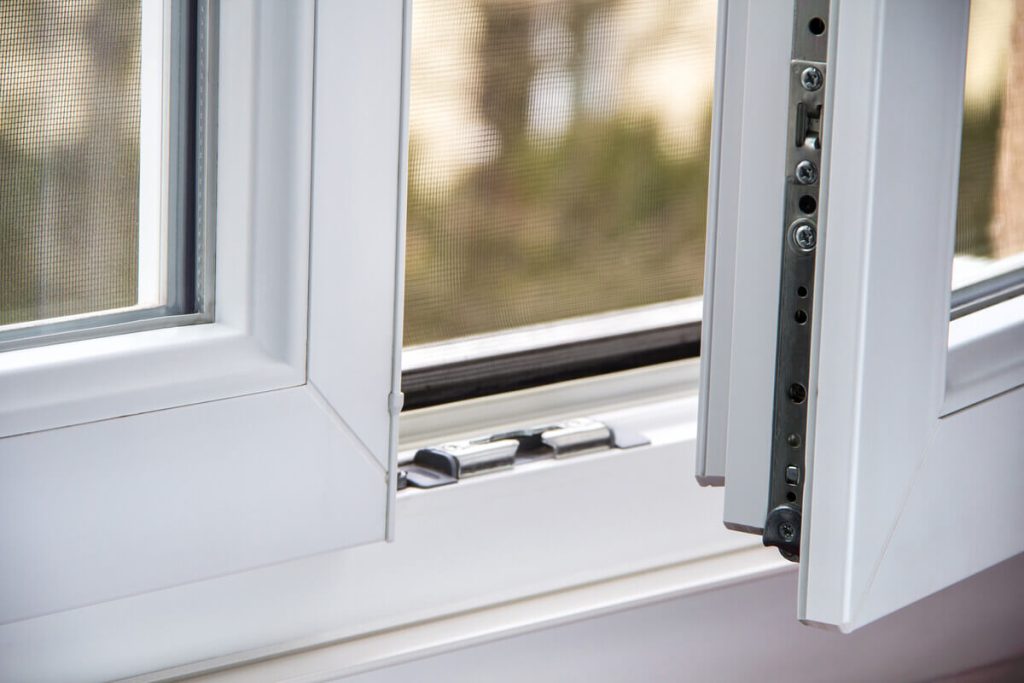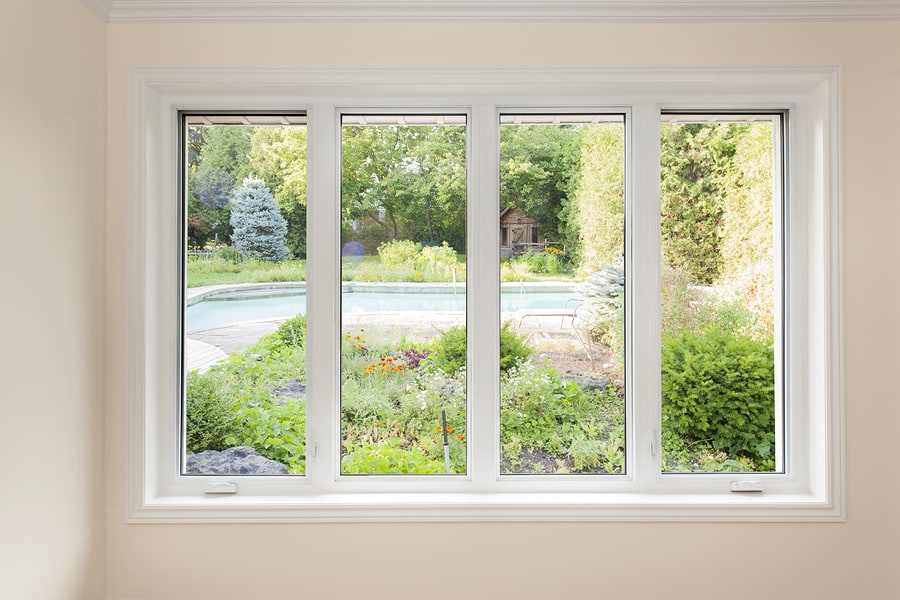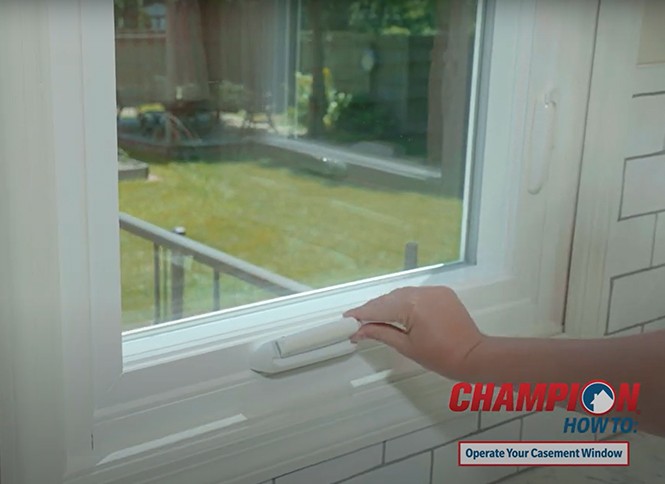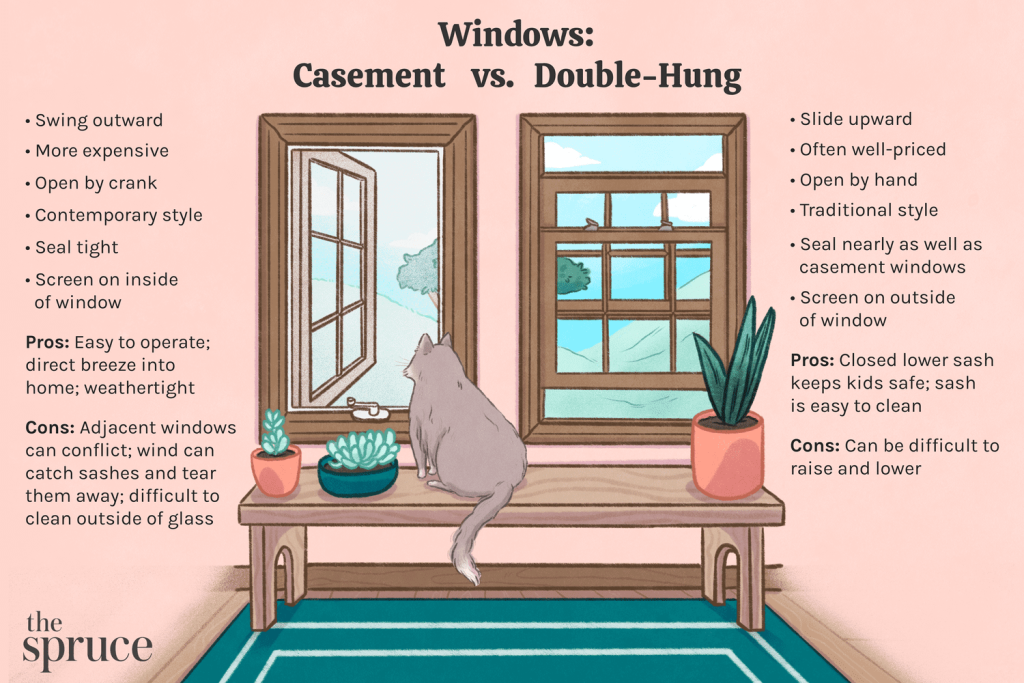So you’re curious about how casement impact windows function, huh? Well, let me break it down for you. Casement windows are a popular choice for many homeowners because of their unique design and practicality. Unlike traditional windows that slide up and down, casement windows operate on a hinge system, swinging open and shut like a door. But what sets casement impact windows apart from regular casement windows is their impressive ability to withstand extreme weather conditions. Equipped with impact-resistant glass and a strong frame, these windows provide increased security and protection against high winds and flying debris. In this article, we’ll take a closer look at the mechanics behind these innovative windows and explore the various benefits they offer.

This image is property of impactwindowcenter.com.
What are Casement Impact Windows?
Casement impact windows are a type of window specifically designed to withstand high winds and impact from debris during severe weather conditions. These windows are constructed with sturdy frames and impact-resistant glass, making them an ideal choice for homes located in hurricane-prone areas or regions with high wind speeds. Casement impact windows operate on a hinge mechanism that allows them to swing open and close, offering enhanced security, energy efficiency, improved ventilation, and unobstructed views.
Definition and purpose of casement impact windows
Casement impact windows are characterized by their hinged operation, where they swing open and close like a door. They are typically installed vertically and secured with a multi-point locking system, providing excellent protection against intrusions and high winds. These windows are made from durable materials such as aluminum or vinyl frames and impact-resistant laminated glass, offering homeowners peace of mind in terms of both safety and durability.
The purpose of casement impact windows is twofold. Firstly, they are designed to protect homes and their occupants during severe weather events, such as hurricanes or tropical storms. The sturdy construction and impact-resistant glass of these windows help prevent debris from shattering them, keeping the interior safe from wind, water, and projectiles. Secondly, casement impact windows also offer other benefits such as energy efficiency, improved ventilation, and unobstructed views, making them an all-around excellent investment for homeowners.
Types of casement impact windows
Casement impact windows come in a variety of styles and designs, allowing homeowners to choose the one that best suits their needs and home aesthetics. Some common types include:
- Single casement windows: These are windows that consist of a single pane of glass hinged on one side, allowing them to swing open and close.
- French casement windows: This type of casement window consists of two panels hinged on the sides, allowing them to swing open like a door. French casement windows offer a wider opening and enhanced ventilation.
- Push-out casement windows: Instead of using a crank or lever to open, push-out casement windows are operated by pushing the window open manually. This type of window provides a sleek and modern aesthetic, and the absence of a crank mechanism allows for unobstructed views.
The choice of casement impact window type depends on factors such as personal preference, architectural style of the home, and desired functionality.
Advantages of Casement Impact Windows
Energy efficiency
Casement impact windows are known for their excellent energy efficiency. The tight seal created by the multi-point locking system and compression seals around the frame prevents air infiltration and minimizes heat transfer, resulting in lower energy consumption for heating and cooling. This helps homeowners save on energy bills and reduce their carbon footprint.
Enhanced security
The sturdy construction of casement impact windows, along with their multi-point locking system, provides enhanced security for your home. These windows are designed to withstand forceful impacts, making it extremely difficult for intruders to break in. The laminated impact-resistant glass is also an effective deterrent against break-ins, as it cannot be easily shattered.
Improved ventilation
Casement impact windows have a unique design that allows them to open fully, creating a wide opening for maximum ventilation. Unlike sliding windows, which only allow half of the window to be open at a time, casement windows provide unobstructed airflow and can catch cross breezes effectively. This can help improve indoor air quality and create a more comfortable living environment.
Unobstructed views
Casement impact windows offer unobstructed views of the outdoors, thanks to their single pane of glass and absence of horizontal mullions or dividers. This makes them an excellent choice for homes with scenic views or for those who want to maximize natural light and maintain a seamless connection with the outdoor environment.
Overall, the advantages of casement impact windows make them a highly desirable option for homeowners looking to upgrade their windows for improved energy efficiency, security, ventilation, and aesthetics.

This image is property of saharawindowanddoors.com.
Components of Casement Impact Windows
Frames
The frames of casement impact windows are typically made from durable materials such as aluminum or vinyl. These materials are chosen for their strength, durability, and resistance to corrosion. Aluminum frames are lightweight and offer a sleek and modern look, while vinyl frames are low-maintenance and provide excellent thermal insulation properties. The frames are designed to support the weight of the glass and provide structural integrity to the window.
Glass
The glass used in casement impact windows is a crucial component that contributes to their strength and durability. Impact-resistant glass is made by sandwiching a layer of polyvinyl butyral (PVB) between two or more layers of glass. This PVB interlayer helps hold the glass together even when it is shattered, preventing it from breaking into sharp and dangerous shards. Impact-resistant glass also offers protection against UV rays, reducing the fading of furniture and flooring caused by prolonged exposure to sunlight.
Hardware
The hardware of casement impact windows includes components such as hinges, crank mechanisms, and locks. These components are specifically designed to withstand high winds, pressure differentials, and forceful impacts. Stainless steel hardware is often used for its strength and resistance to corrosion. The multi-point locking system ensures that the window is securely closed and provides an additional layer of security against break-ins.
The combination of sturdy frames, impact-resistant glass, and reliable hardware makes casement impact windows a formidable barrier against extreme weather conditions and a durable investment for homeowners.
Mechanism of Operation
Swinging action
The swinging action is the defining feature of casement impact windows. These windows are hinged on one side and open outward like a door when the crank is turned or the push-out mechanism is activated. This swinging action provides a wide opening for maximum ventilation and easy access to clean both the interior and exterior surfaces of the window. The casement windows can also be closed tightly, creating a tight seal that prevents air infiltration and enhances energy efficiency.
Multi-point locking system
Casement impact windows are equipped with a multi-point locking system, which ensures that the window is securely closed and provides enhanced protection against break-ins. This locking system engages multiple locking points along the frame, distributing the force evenly and making it more difficult for intruders to force the window open. The multi-point locking system also helps to keep the window tightly sealed, preventing air leaks and drafts.
Operation with a crank
Most casement impact windows are operated using a crank mechanism. A handle or crank is attached to the window frame, which can be turned to open and close the window. Turning the crank in one direction will swing the window open, and turning it in the opposite direction will close and secure the window. The crank provides precise control over the opening and closing angle of the window, allowing homeowners to adjust the level of ventilation according to their preference.
The mechanism of operation of casement impact windows provides ease of use, versatility, and secure functionality, making them a popular choice for homeowners seeking both practicality and aesthetics.

This image is property of www.championwindow.com.
Installation Process
Measurement and preparation
Before installing casement impact windows, accurate measurements of the window opening are crucial to ensure a proper fit. The old window must be carefully measured to determine the dimensions of the new window. Once the measurements are obtained, any necessary preparations, such as removing curtains, blinds, or other window treatments, should be done before the installation process begins.
Removal of old window
The old window must be carefully removed to avoid damage to the surrounding structure and minimize disruption to the interior. This involves removing any screws, nails, or fasteners that secure the window frame to the wall. The old window can then be carefully detached from the frame, taking care not to damage the surrounding walls or trim.
Installation of new window
Once the old window has been removed, the new casement impact window can be installed. This involves placing the window into the window opening and securing it with screws or fasteners. It is important to ensure that the window is level, plumb, and square during the installation process to ensure proper operation and a tight seal.
Sealing and insulation
Once the new window is securely installed, it is important to seal any gaps between the window frame and the wall to prevent air leaks and water infiltration. This can be done using weatherstripping or caulk, ensuring a tight seal around the perimeter of the window. Proper insulation around the window frame can also help improve energy efficiency and reduce drafts.
Professional installation is highly recommended for casement impact windows to ensure proper fit, operation, and sealing. Hiring a qualified installer can help avoid costly mistakes and ensure that the windows are installed correctly for optimal performance.
Maintenance and Cleaning Tips
Regular inspections
Regular inspections of casement impact windows are essential to identify any issues or potential problems early on. This involves checking the frames, glass, and hardware for signs of wear, damage, or deterioration. Look for cracks, chips, or scratches on the glass, as well as any loose or damaged frames or hardware. Inspecting the windows periodically can help prevent minor issues from becoming major problems and ensure that the windows remain in optimal condition.
Cleaning the glass and frames
To maintain the clarity and appearance of the glass, regular cleaning is necessary. Use a mild, non-abrasive glass cleaner and a soft cloth or sponge to remove dust, dirt, and grime from the glass surface. Avoid using harsh chemicals or abrasive materials that can scratch or damage the glass. Clean the frames with a gentle detergent and water, rinsing thoroughly to remove any residue. Wipe dry with a clean cloth to prevent water spots or stains.
Maintaining hardware and mechanisms
The hardware and mechanisms of casement impact windows should be kept clean and well-maintained for optimal performance. Lubricate the hinges, crank mechanism, and locks regularly with a silicone-based lubricant to ensure smooth operation. Use a soft brush or cloth to remove any dirt or debris that may accumulate in the hardware. Check the seals and gaskets around the frame for any signs of wear or damage and replace if necessary.
By following these maintenance and cleaning tips, homeowners can ensure that their casement impact windows remain in excellent condition, providing long-lasting performance and functionality.

Potential Issues and Troubleshooting
Air leaks and drafts
One common issue that homeowners may encounter with casement impact windows is air leaks or drafts. This can occur if the window is not properly sealed or if the seals and weatherstripping around the frame have worn out or become damaged. To troubleshoot this problem, inspect the window for any gaps or openings. Replace worn-out seals or weatherstripping and ensure that the window is properly closed and locked to create a tight seal.
Difficulty in opening or closing
If a casement impact window becomes difficult to open or close, it may be due to several reasons. One possible cause is the accumulation of dirt, debris, or rust in the hinges or hardware, which can impede their movement. In this case, cleaning the hinges and hardware and lubricating them with a silicone-based lubricant can help restore smooth operation. If the issue persists, there may be an alignment problem or a more significant issue with the window mechanism that requires professional assistance.
Water infiltration
Water infiltration can occur if the casement impact window is not properly sealed or if there is damage to the seals or weatherstripping. Inspect the window for any gaps or openings where water could enter. Replace worn-out or damaged seals and weatherstripping, and ensure that the window is properly closed and locked. Proper installation and sealing during the installation process can help prevent water infiltration issues.
Condensation
Condensation can occur on the interior surface of windows when there is a significant difference in temperature and humidity between the indoor and outdoor environments. To reduce condensation, maintain consistent humidity levels indoors, ensure proper ventilation, and use window treatments such as blinds or curtains to control airflow. If condensation persists or occurs between the glass panes, it may indicate a problem with the window’s seal or glass unit, and professional assistance should be sought.
Addressing these potential issues and troubleshooting them promptly can help ensure the optimal performance and longevity of casement impact windows.
Cost Considerations
Factors influencing cost
Several factors can influence the cost of casement impact windows. The size of the windows, the materials used for the frames and glass, the level of impact resistance required, and the complexity of the installation process can all impact the overall cost. Additionally, customization options, such as color, finish, and hardware choices, can also affect the price. It is important to consider these factors and work with a reputable manufacturer or contractor to determine an accurate cost estimate based on individual requirements.
Comparison to other window types
When comparing the cost of casement impact windows to other window types, it is important to consider the additional benefits they offer. While casement impact windows may require a higher upfront investment compared to standard windows, they provide superior protection against severe weather, enhanced energy efficiency, improved ventilation, and unobstructed views. The long-term savings in energy costs, potential insurance discounts, and increased resale value can outweigh the initial cost difference.
Long-term savings
Casement impact windows offer long-term savings in terms of energy efficiency and maintenance costs. The tight seal and impact-resistant glass help reduce energy consumption for heating and cooling, leading to lower energy bills over time. Additionally, the durability and low-maintenance nature of casement impact windows mean that homeowners may save on repair and replacement costs compared to standard windows. Long-term savings should be considered when evaluating the cost-effectiveness of casement impact windows.

This image is property of www.thespruce.com.
Choosing the Right Manufacturer
Researching reputable brands
When choosing casement impact windows, it is essential to research and choose a reputable manufacturer. Look for manufacturers with a proven track record of producing high-quality impact-resistant windows and positive customer reviews. Consider factors such as the manufacturer’s experience, industry certifications, and warranties offered. A reputable manufacturer will provide reliable products and reliable customer support, ensuring that homeowners receive the best value for their investment.
Consideration of warranties and certifications
Warranties and certifications are important considerations when choosing a manufacturer for casement impact windows. Look for manufacturers that offer comprehensive warranties on their products, covering issues such as defects, seal failure, and impact resistance. Industry certifications, such as those from the American Architectural Manufacturers Association (AAMA), the Hurricane Impact Testing, and the Energy Star program, can also indicate a manufacturer’s commitment to quality and compliance with industry standards.
By carefully choosing a reputable manufacturer, homeowners can ensure that their casement impact windows are of the highest quality and provide the desired performance and durability.
Conclusion
Casement impact windows are a practical and stylish choice for homeowners seeking enhanced protection, energy efficiency, improved ventilation, and unobstructed views. Their sturdy construction, impact-resistant glass, and reliable hardware make them a valuable investment for homes located in hurricane-prone areas or regions with high wind speeds. With their swinging action, multi-point locking system, and operation with a crank, casement impact windows offer ease of use and secure functionality. Professional installation, regular maintenance, and prompt troubleshooting of potential issues are important for maintaining the optimal performance of these windows. The cost considerations, including factors influencing cost, comparison to other window types, and long-term savings, should be carefully evaluated. When selecting casement impact windows, researching reputable brands and considering warranties and certifications is essential to ensure the best value for the investment. By choosing casement impact windows, homeowners can enjoy the benefits of enhanced security, energy efficiency, improved ventilation, and unobstructed views while adding value and durability to their homes.
